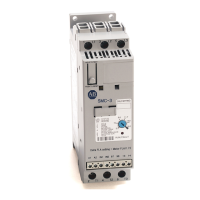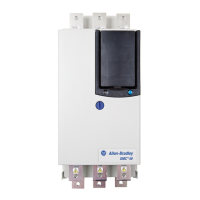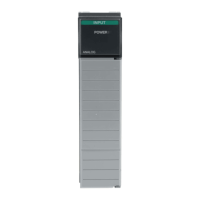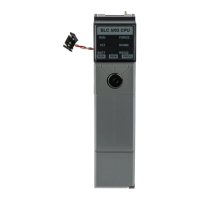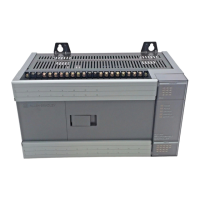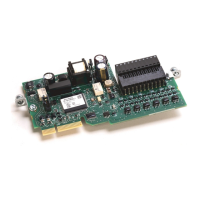Motion Error Codes, faults, and attributes
Rockwell Automation Publication MOTION-RM002H-EN-P-February 2018 607
VelocityOffset
G11/Configuration
Used to provide a dynamic velocity correction to the output of the position servo
loop. It can be tied into custom outer control loop algorithms using Function Block
programming.
VelocityPolarity
G10/Configuration
Maps directly to the SERCOS IDN. It is automatically set based on the current Drive
Polarity Settings. All command bits are set according to the Command polarity bit
value and all feedback bits are set according to the Feedback Polarity bit setting.
VelocityProportionalGain
G11/Configuration
This value is multiplied by the velocity error to create a component to the Servo
Output or Torque Command that attempts to correct for the velocity error,
creating the damping effect. Increasing the gain value results in smoother
motion, enhanced acceleration, reduced overshoot, and greater system stability.
Too great of an increase can cause frequency instability and resonance effects.
VelocityScaling
G9/Configuration
Used to convert the output of the servo loop into equivalent voltage to an external
velocity servo drive. It has the effect of normalizing the units of the servo loop
gain parameters so their values are not affected by variations in feedback
resolution, drive scaling, or mechanical gear ratios. The VelocityScaling value is
normally established by the servo’s automatic tuning procedure but it can be
manually calculated:
VelocityScaling = 100 % / (Speed @ 100 %)
VelocityServoBandwidth
G11/Configuration
Represents the unity gain bandwidth that is used to calculate the gains for
subsequent MAAT instruction. Within the constraints of a stable servo system, the
higher the VelocityServoBandwidth the better the dynamic performance of the
system. A maximum value for this is generated by the MRAT instruction.
Computing the gains based on this maximum value by way of the MAAT
instruction results in dynamic response in keeping with the current value of the
DampingFactor.
VelocityStandstillWindow
G10/Configuration
Maps directly to the SERCOS IDNs and is automatically configured to reasonable
default values. Manipulation is not needed unless motivated by a specific
application requirement.
VelocityThreshold
G10/Configuration
Maps directly to the SERCOS IDNs and is automatically configured to reasonable
default values. Manipulation is not needed unless motivated by a specific
application requirement.
VelocityWindow
G10/Configuration
Maps directly to the SERCOS IDNs and is automatically configured to reasonable
default values. Manipulation is not needed unless motivated by a specific
application requirement.
WatchPosition
G1/Status
The current set-point of an axis as set up in the last, most recently executed, MAW
instruction for that axis.

